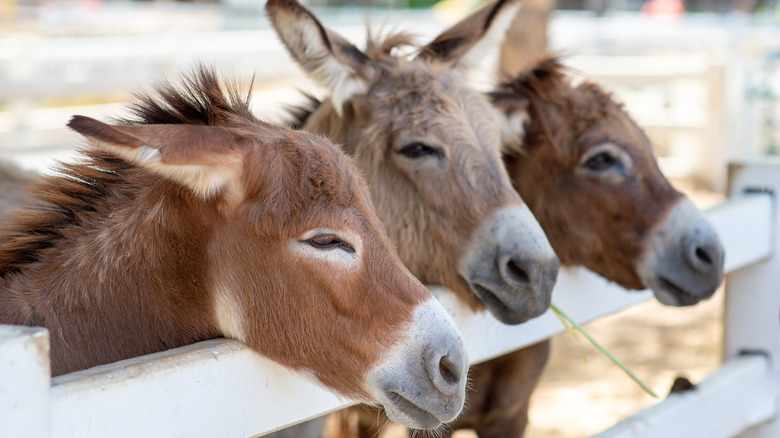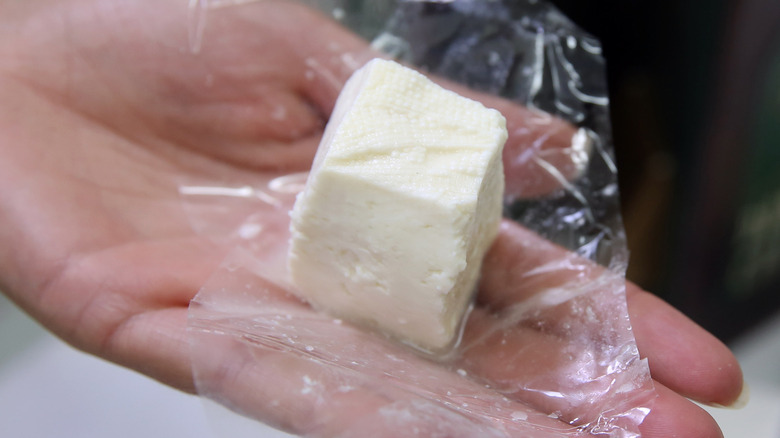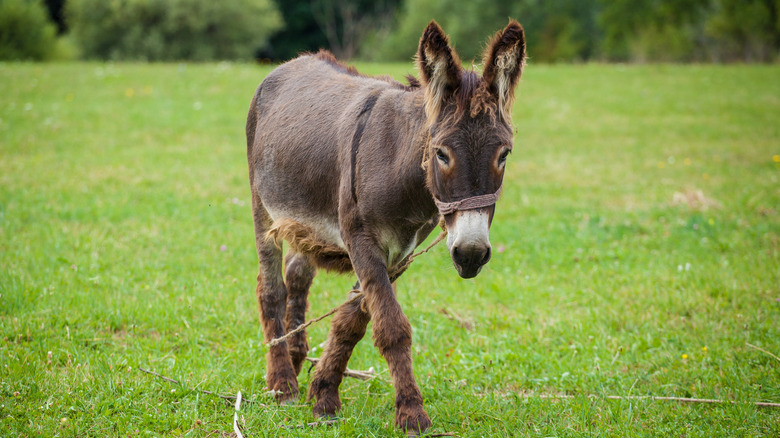The World's Most Expensive Cheese Comes From Balkan Donkey Milk
In December 2021, the average price of a pound of cheddar cheese set U.S. customers back $5.26, per Statista. Even without unprecedented factors like resource blocks engendered by war, supply-chain disruptions, and labor shortages (all of which have played a key role in the record-high inflation that continues to threaten food security around the world), the process of making cheese is not cheap. Still, in terms of price, mass-produced fromage doesn't hold a candle to its artisan counterparts.
To give an idea of the labor that goes into making the provisions of a quality cheese plate, Culture Cheese Magazine solicited the expertise of Gianaclis Caldwell, the author of "Mastering Artisan Cheesemaking." Like all handmade goods, artisan cheese is made in small batches; Caldwell notes that a single gallon of "thoughtfully produced milk" may only yield about a pound of cheese. When you factor in production costs, the labor of aging the cheese, and transportation, things start to get pricey.
Oddly enough, the most expensive cheese in the world doesn't come from cows, goats, or sheep. It comes from donkeys. Balkan donkeys. And depending on your living situation, a single pound of it might cost you more than a month's rent.
That'll be $1,700
In Zasavica, a marshland nature reserve in the west central Serbian region of Mačva, coffles of domesticated donkeys roam amongst the bogs. But they're not just any donkeys. Unbeknownst to them, they hold precious milk that's made into pule, a cheese that can cost up to $1,700 a pound. According to Atlas Obscura, the white cheese is similar in both flavor and texture to manchego, a crumbly sheep's milk cheese made in Spain (per Castello Cheese).
The outlet explains that pule's high cost is largely due to the donkeys' limited supply of milk. While a dairy cow produces an average of 60 liters of milk per day, a Serbian donkey will only produce two liters at most. Less milk means fewer milk solids, which means more time is required to make the cheese, which means labor costs are high. Each of these factors makes a delicacy out of a mere morsel of pule.
A win-win for donkeys and cheese lovers
Slobodan Simić, who presides over Zasavica, is something of a donkey hero. According to Cheese Atlas, Simić went to a festival in Ruma, a nearby town, and was horrified to see retired donkeys being abused by locals. As fate would have it, he was three years into to his role as the proprietor of Zasavica, which he had repurposed into a nature reserve in 1997. He loaded up the donkeys and brought them to safety, where they were free to graze on the marshlands to their heart's content. Today, the reserve plays host to nearly 200 donkeys.
BBC Travel's Kristin Vuković visited Simić at the reserve in 2016, where he learned that Simić was the first to produce cheese from donkey milk (which, to be clear, only comprises 60% of pule. The other 40% comes from goat milk). As Zasavica farm manager Jovan Vukadinović put it, "He is full of crazy ideas, but he is always right." Without a doubt, pule could reasonably be considered one of the cheeses from around the world everyone needs to try.


